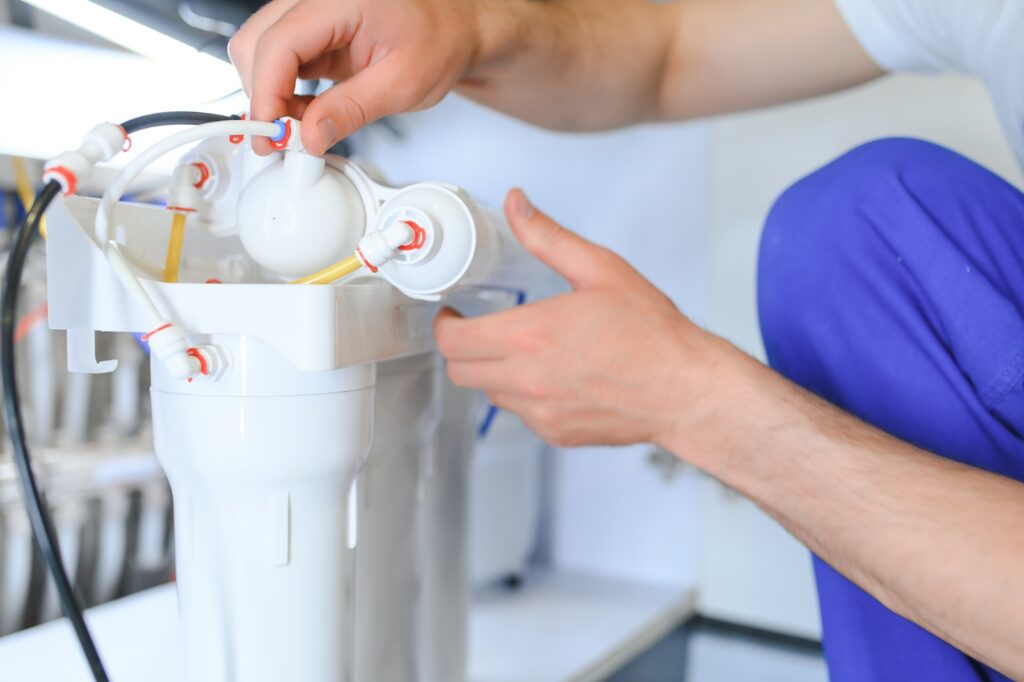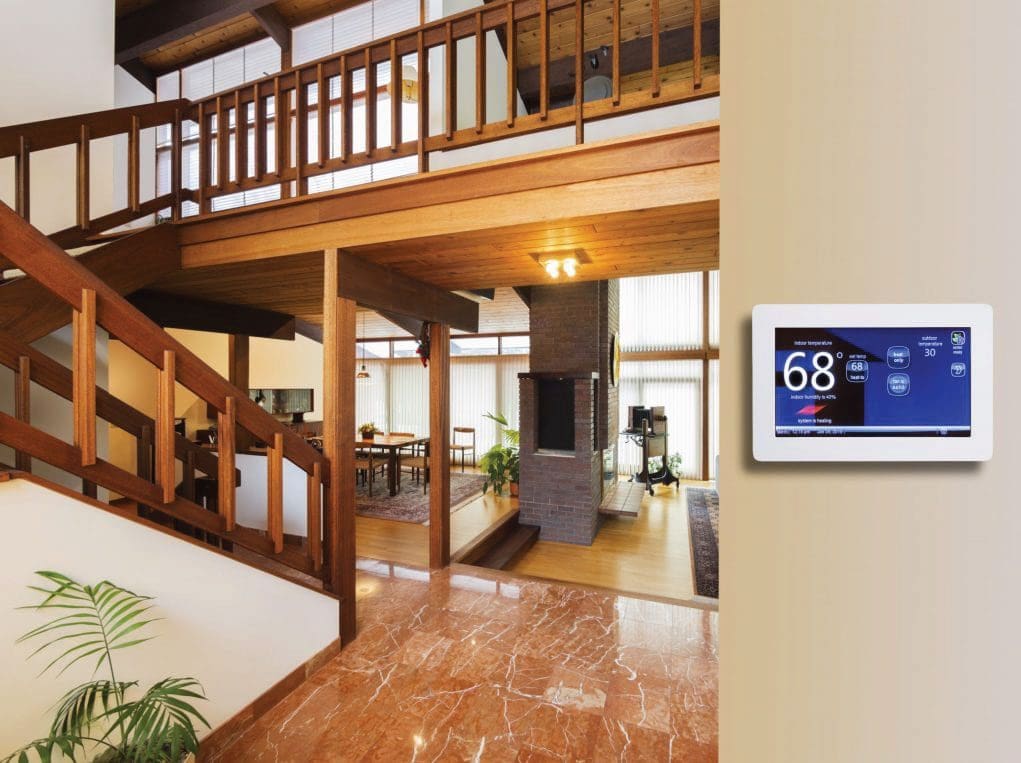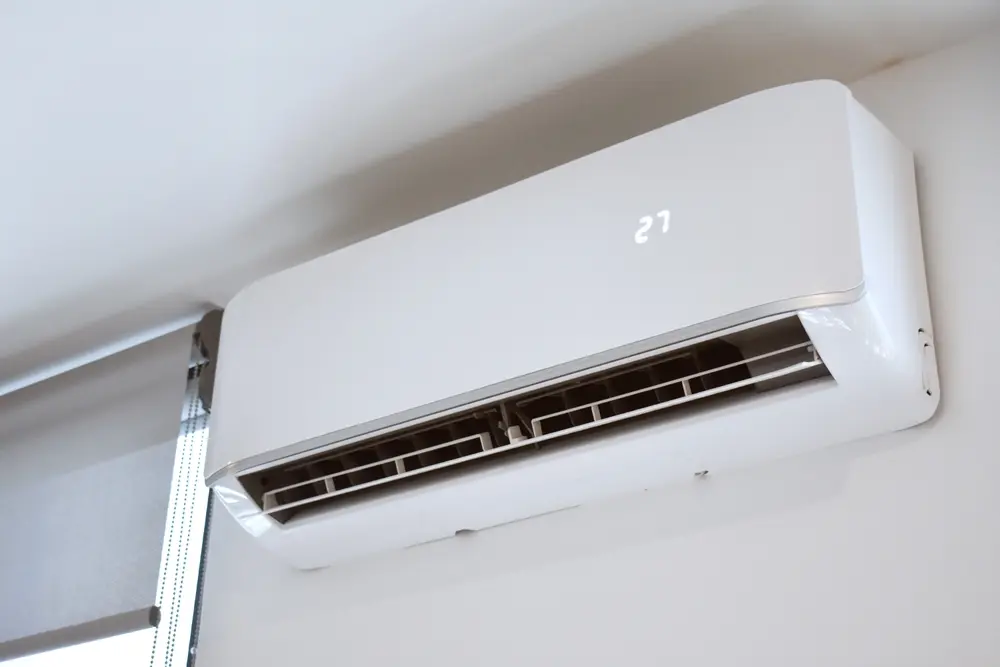
Blog
Is Your Water Softener Full of Water? Potential Issues and Troubleshooting Tips

Should there be water in my water softener salt tank?
While a small amount of water in the salt tank is normal during certain cycles, if your water softener is full of water, it could compromise your system’s performance and lead to costly repairs. Understanding this issue—and knowing how to address it—can save you from the stress and inconvenience of dealing with hard water problems, equipment damage, and unexpected expenses.
Let’s learn more!
Understanding Your Water Softener System
To effectively troubleshoot a water softener tank that’s full of water, you must first understand your water softener’s components and how they work.
How the Softening Process Works
Water softening relies on an ion exchange process that processes hard water for home use.
As water enters the resin tank, specialized beads capture dissolved minerals, such as calcium and magnesium, that cause hardness. This process prevents the buildup of mineral deposits in your pipes and appliances, eliminating the problems associated with hard water, such as soap scum, scale buildup, and appliance inefficiency.
Key Components of a Water Softener
Your water softener system contains several critical components whose functions are important for homeowners to understand when communicating issues with plumbing repair technicians:
- The brine tank stores salt solution
- The control valve manages water flow and timing for regeneration cycles
- The safety float prevents overflow by monitoring water levels
Potential Issues with Water Softeners
A properly functioning water softener should operate quietly in the background. When problems arise, you’ll typically notice the gradual return of mineral buildup on fixtures, reduced soap effectiveness, and spotting on dishes. Recognizing these early warning signs allows you to address issues before they get worse (and more expensive to repair).
Why Is My Water Softener Full of Water?
Several mechanical failures and issues related to maintenance neglect can cause your water softener salt tank to fill with water.
Brine Tank is Overflowing
Overflow problems typically stem from malfunctioning safety float valves that fail to regulate water levels properly. When this component becomes stuck or damaged, it cannot signal the system to stop filling, causing water to accumulate beyond normal levels and potentially flooding the surrounding area.
Salt Bridging
Salt bridging is that hard, crusty layer that forms across the top of your salt supply and prevents proper dissolution. This barrier blocks water from reaching the salt below, disrupting the regeneration process and causing water to remain trapped in the tank instead of cycling through the system as designed.
Failed Resin Bed
Over time, the ion-exchange capacity of the resin beads in your softener can diminish from exposure to iron, sediment, and other contaminants. When the resin bed loses effectiveness, it compromises the regeneration process. The result? A brine tank full of water.
Clogged Drain Line
Mineral buildup or improper drain line installation prevents water from draining during regeneration cycles, causing treated water to back up into the brine tank. These clogs will progressively worsen if not addressed right away.
Malfunctioning Control Valve
The control valve orchestrates the timing and flow of water through various cycles. When this component fails, it may fail to initiate regeneration cycles, resulting in a water softener that is full of water and has lost all softening capabilities.
Sticking Safety Float
When stuck, the safety float is unable to perform its primary function of preventing overfilling. This mechanical failure often results from mineral buildup or debris interference and can lead to potential flooding if not addressed.
Clogged Injector
The injector mechanism creates the vacuum necessary to draw salt solution from the tank during regeneration cycles. When this small but critical component gets clogged with mineral deposits, it cannot generate sufficient suction to empty the brine tank, resulting in standing water after each cycle.
How to Drain Excess Water from Your Water Softener
When you've identified that your water softener tank is full of water, you'll need to remove it before addressing the underlying cause. Here are several effective methods to safely drain the accumulated water from your system.
Use a Bucket or Wet-Dry Vacuum
The most straightforward approach involves manually removing water using a clean bucket or large scoop, allowing you to control the process and potentially save clean water for reuse once repairs are completed.
Alternatively, a wet-dry shop vacuum designed for water extraction can quickly and efficiently remove large volumes of water without the physical strain of manual scooping.
Remove the Brine Well and Dump the Water
For complete drainage, you can disconnect the entire brine well assembly by removing the safety float and carefully lifting out the cylindrical brine well. Once the brine well is removed, you can safely tip the tank and pour the water down the drain, as brine water poses no environmental hazard when properly disposed of.
Start a Manual Regeneration Cycle
If your water softener's regeneration system is still functional, you can initiate a manual regeneration cycle by pressing and holding the regenerate button, then immediately pressing it again to bypass the brine draw phase. This method leverages your system's built-in drainage capabilities to automatically remove excess water, provided the regeneration mechanism itself isn't the source of the problem.
Don’t Ignore a Full Brine Tank — Act Early
Addressing a water softener full of water is crucial for maintaining your water softener’s effectiveness and preventing further damage to the system. Delaying repairs can lead to bacterial growth, salt waste, system failure, and emergency plumbing services.
Keep Your System Running Smoothly With Priority Maintenance
Regular maintenance is the key to preventing water softener issues before they disrupt your daily routine and require emergency repairs.
Chapman's Priority Maintenance Plan provides comprehensive plumbing system care with scheduled inspections, priority service scheduling, and exclusive discounts on repairs and parts. By partnering with Chapman's experienced technicians, you'll enjoy peace of mind knowing that your water softener will run smoothly year-round.
FAQs
What is a brine tank?
The brine tank, also known as the salt tank, is an important part of a water softener system. It holds the salt needed for softening water. When water mixes with the salt, it creates a salty solution called brine, which helps in the process of making hard water softer.
What is water softener regeneration?
Regeneration is an important job of a water softener, and if it doesn't happen on a regular schedule, it could point to a problem. This process helps clear out minerals that can build up on the softener's resin beads, ensuring they keep working effectively. To do this, the system adds salt to replenish the beads with sodium, which is essential for them to function properly.
What happens if you overfill your water softener?
If your water softener is overflowing, it can cause water damage and hard salt due to humidity. It's important to fix the problem quickly, which may require a plumber. In the meantime, you can use the bypass valve to temporarily avoid the issue until help arrives.
How full should my water softener be?
Before adding salt to the mineral tank, make sure your brine water is between eight and fourteen inches deep. The particular number may differ depending on the brand and model of your unit.
Does a water softener have an overflow pipe?
Overflow pipes are necessary for water softeners. They are located in the brine tank.










